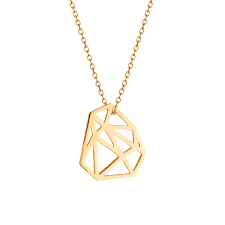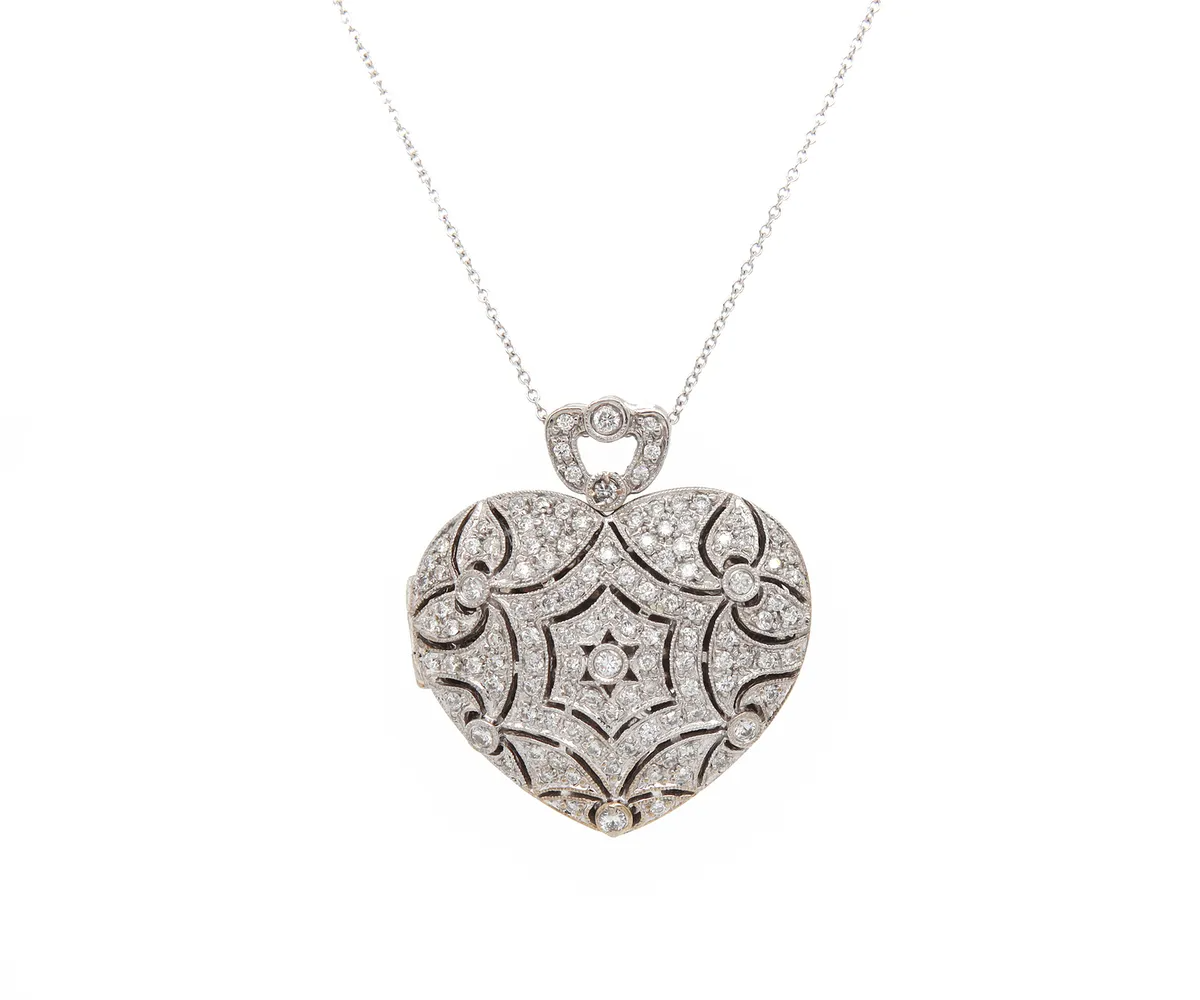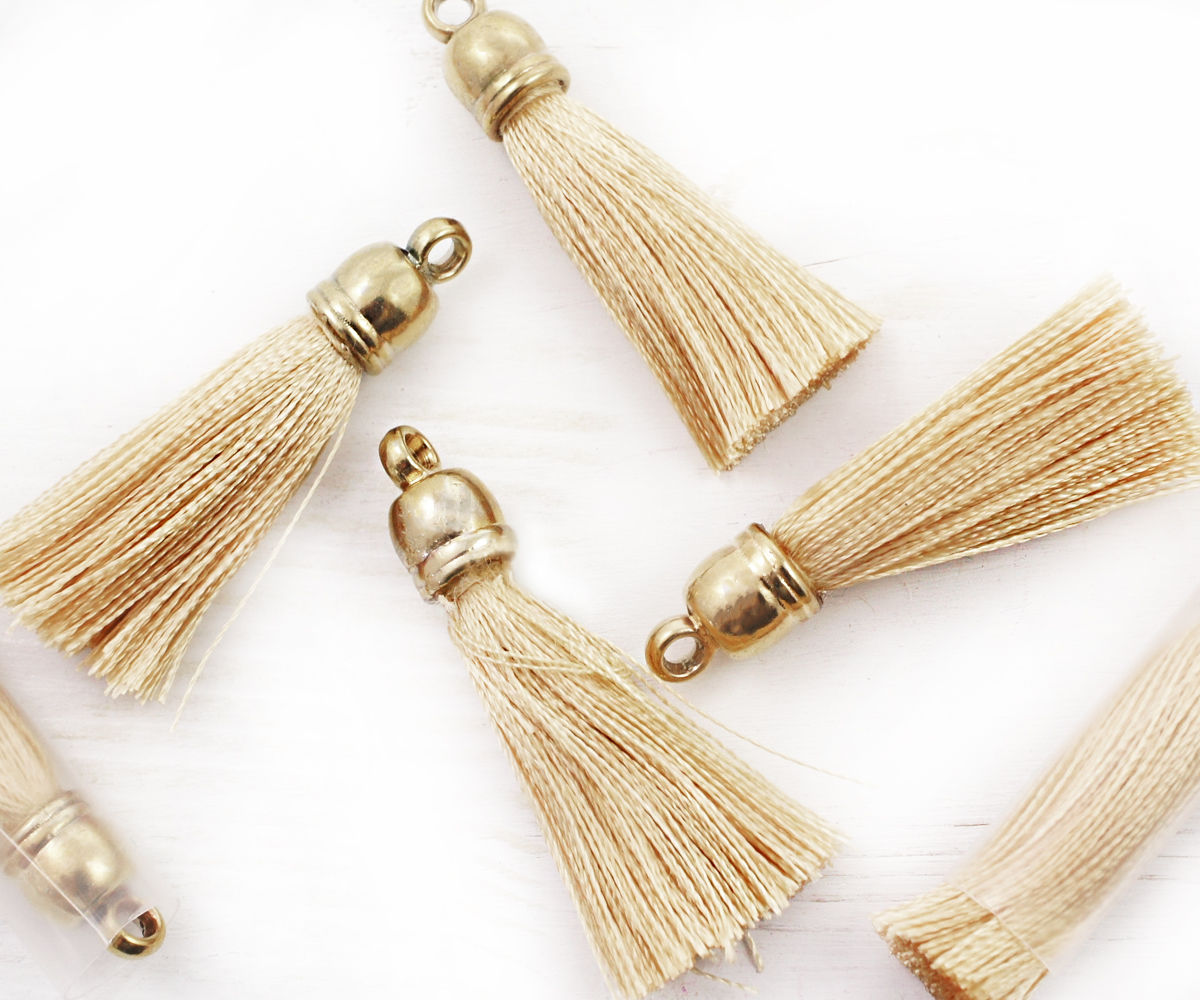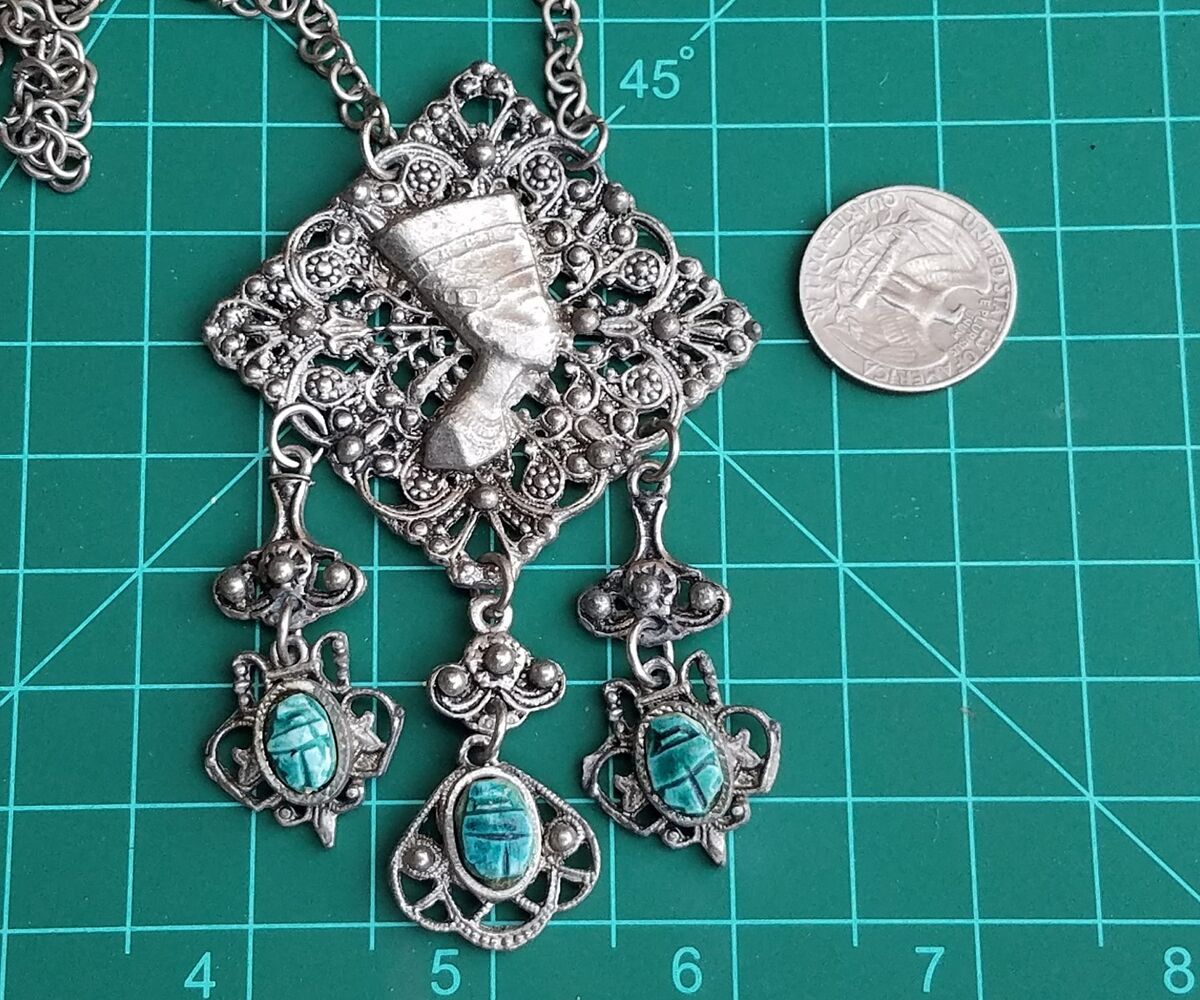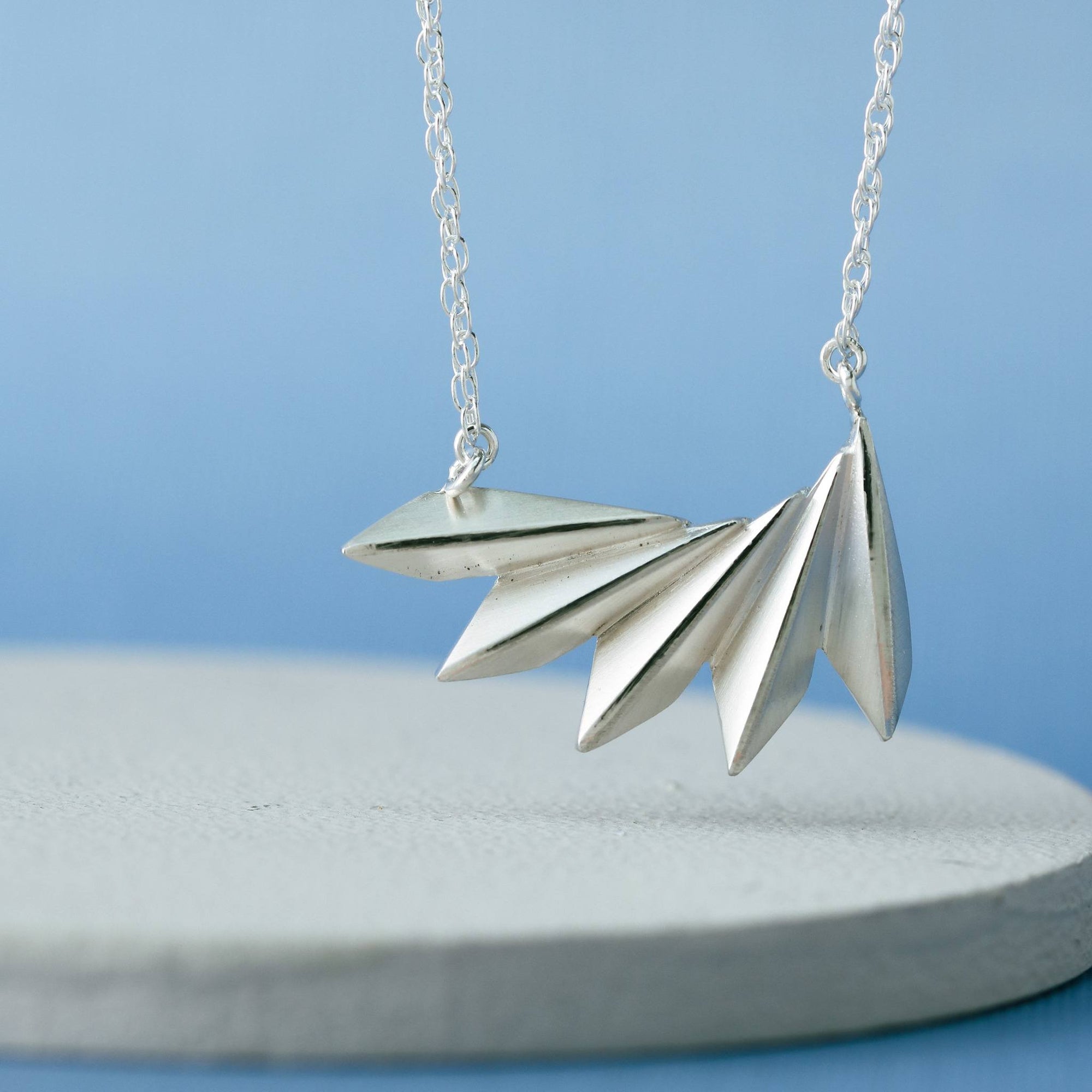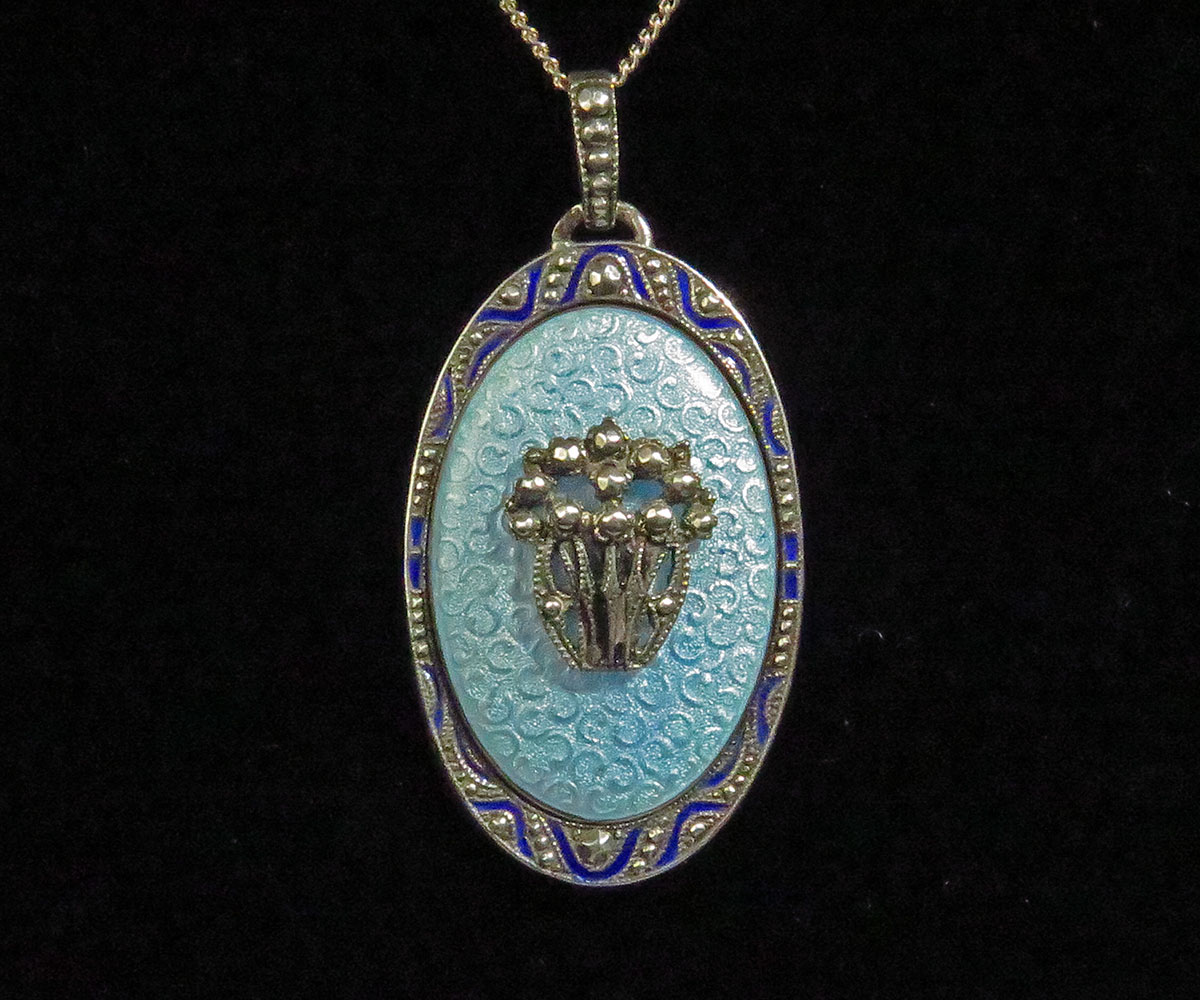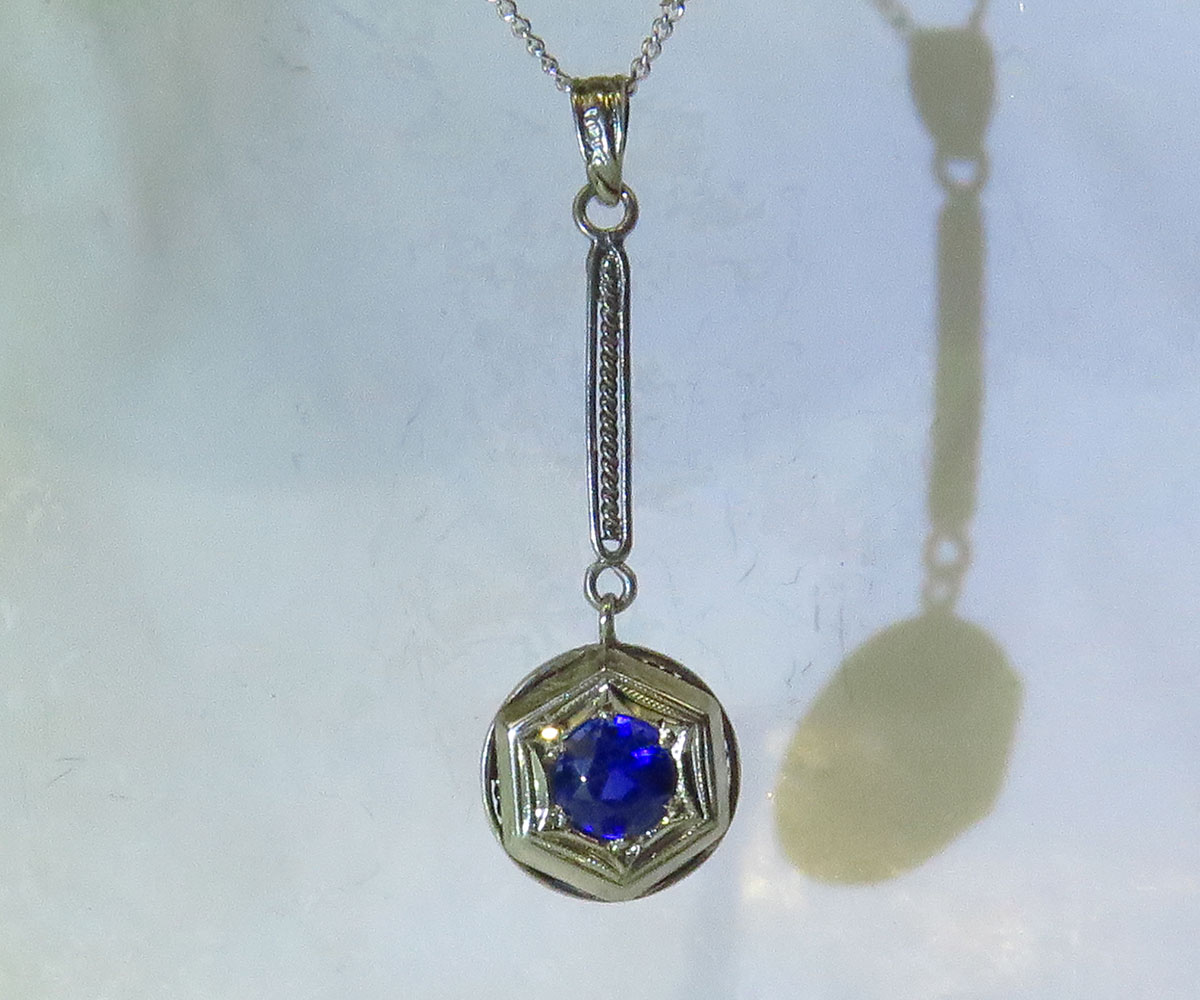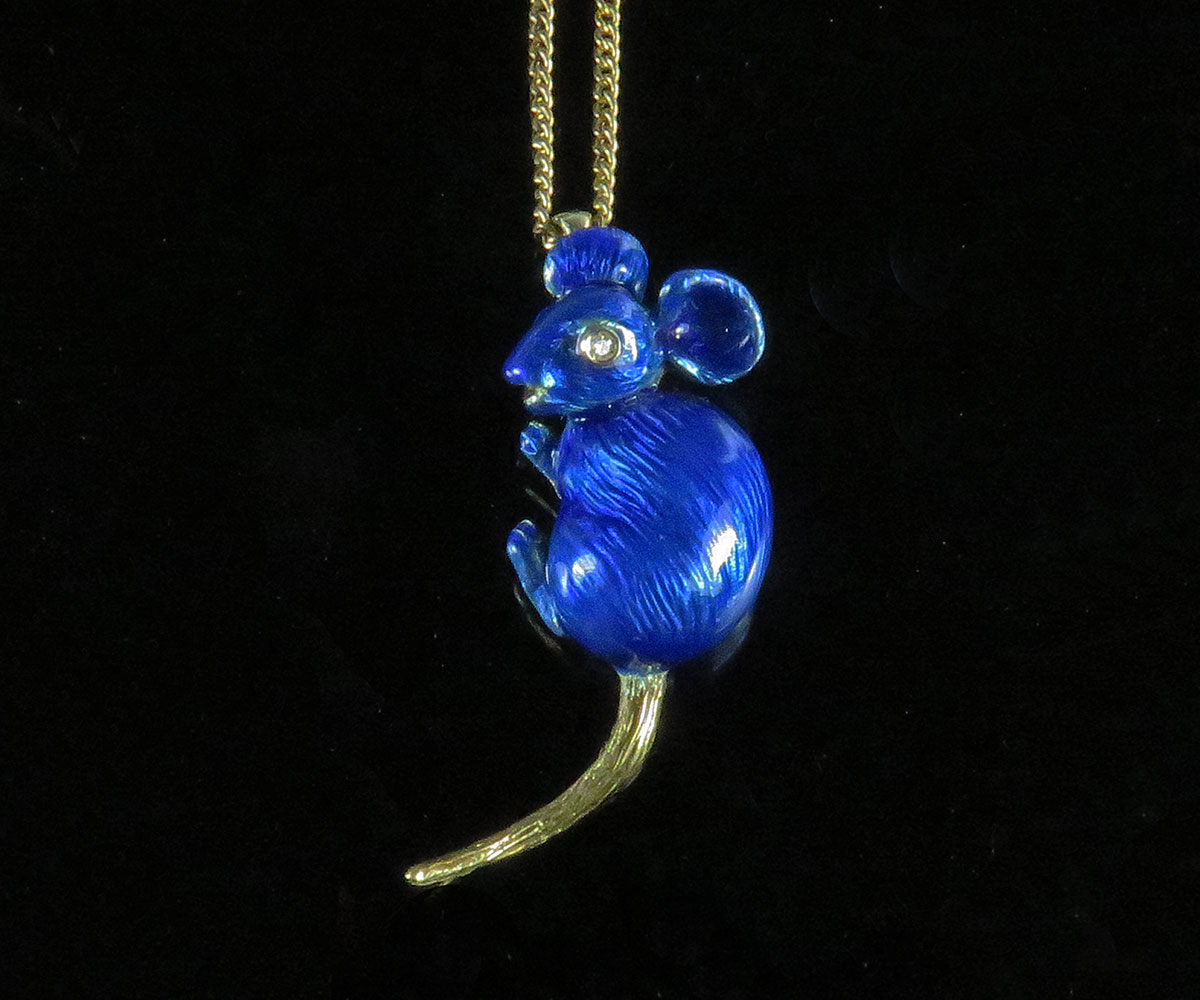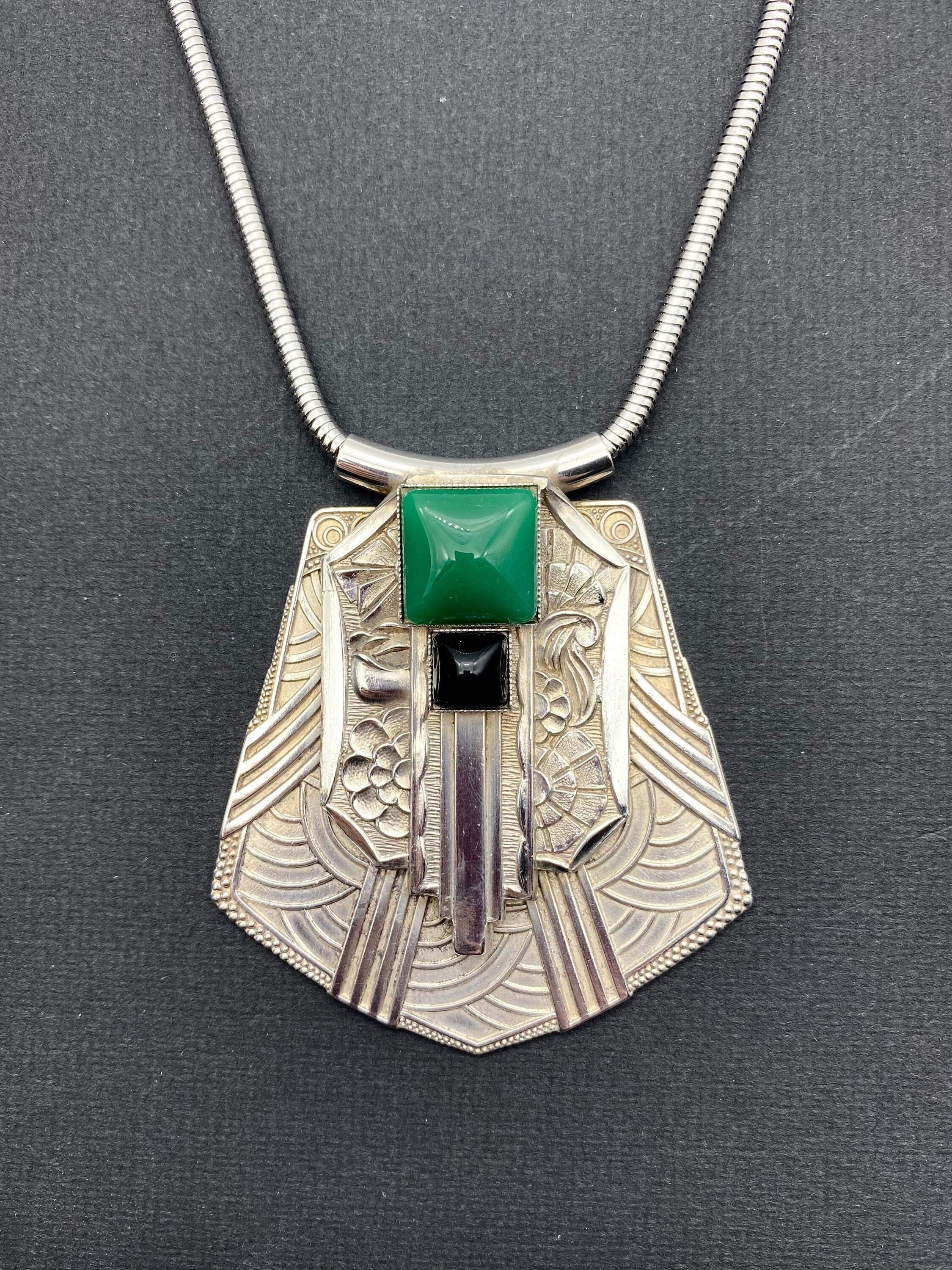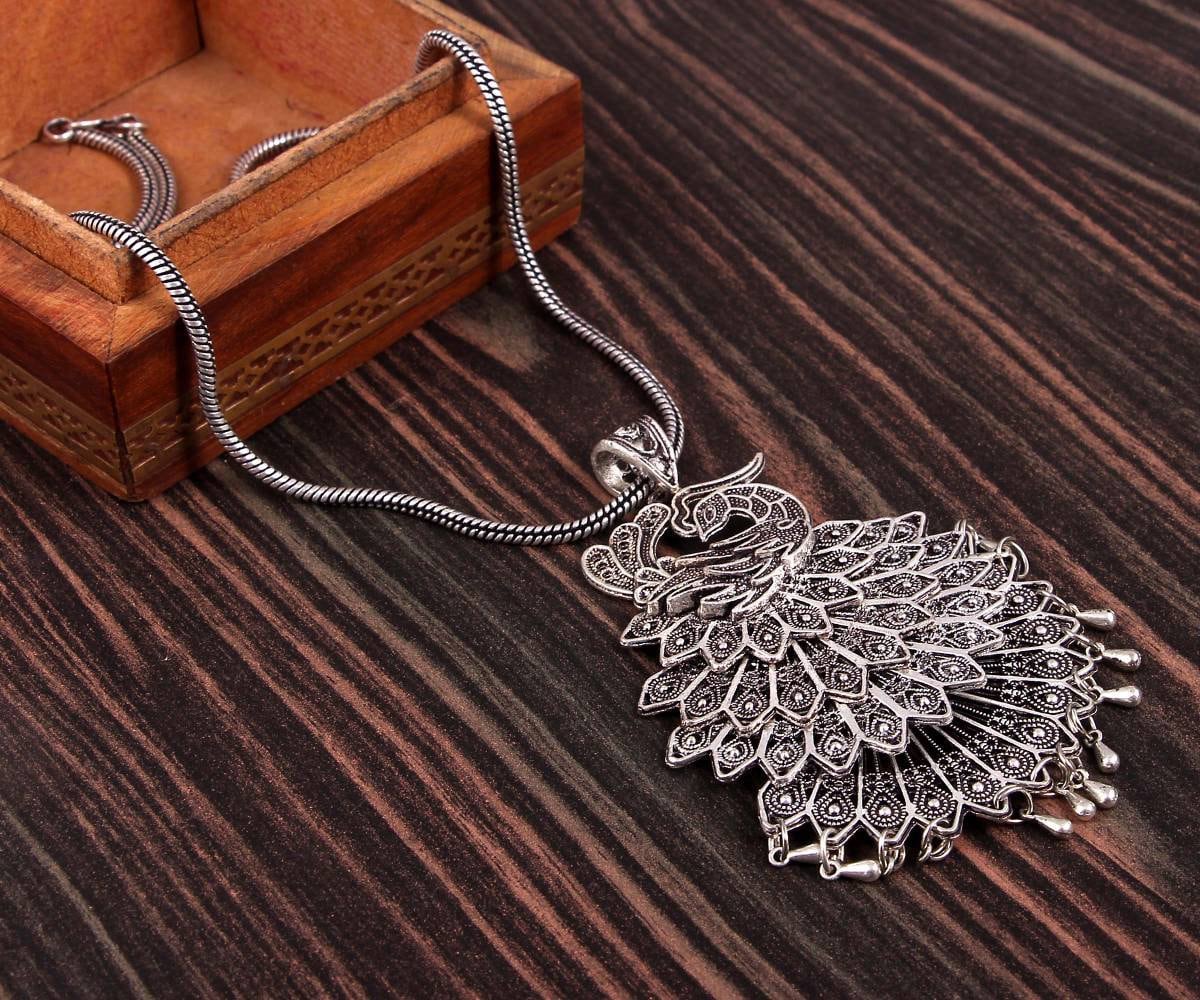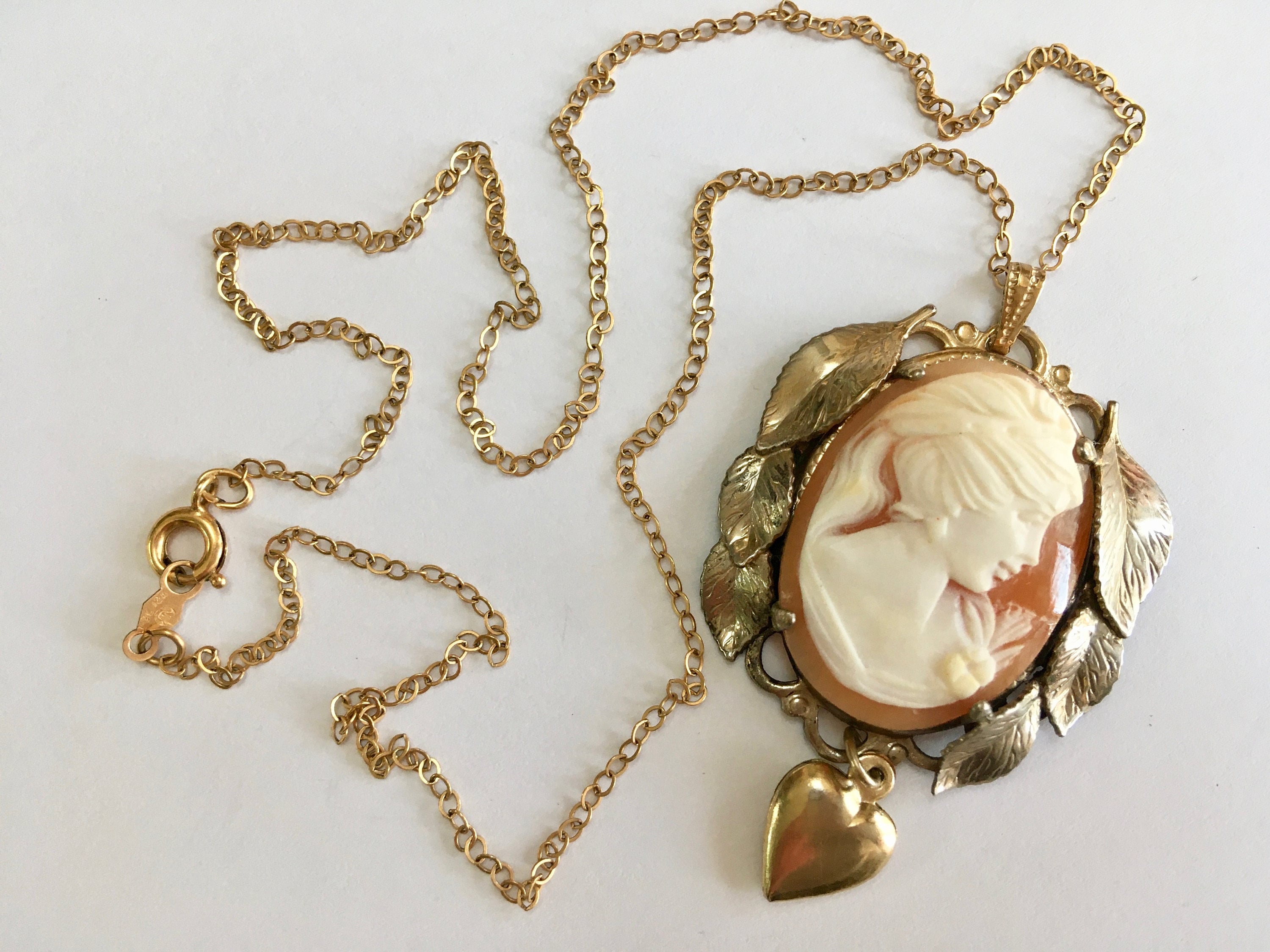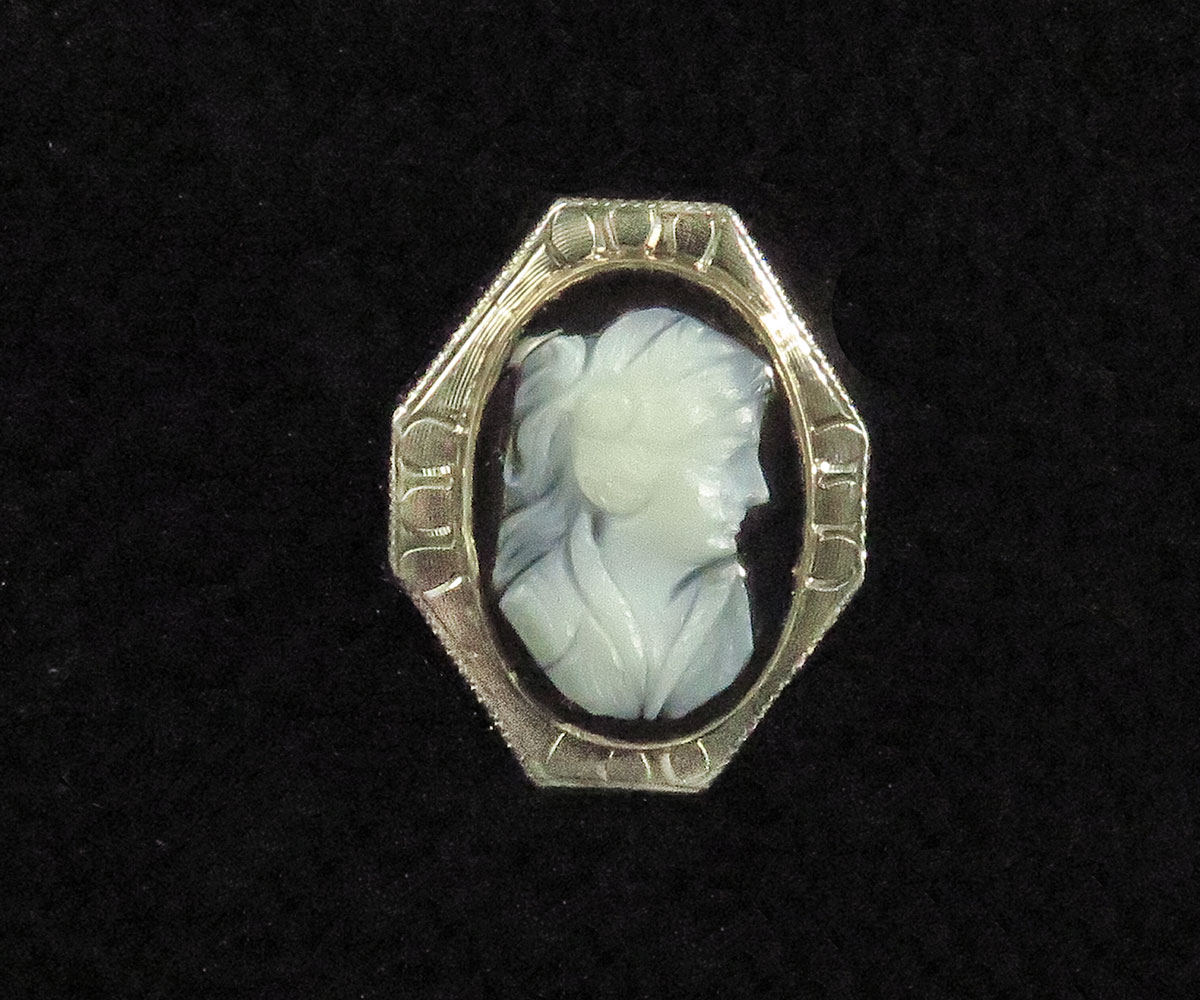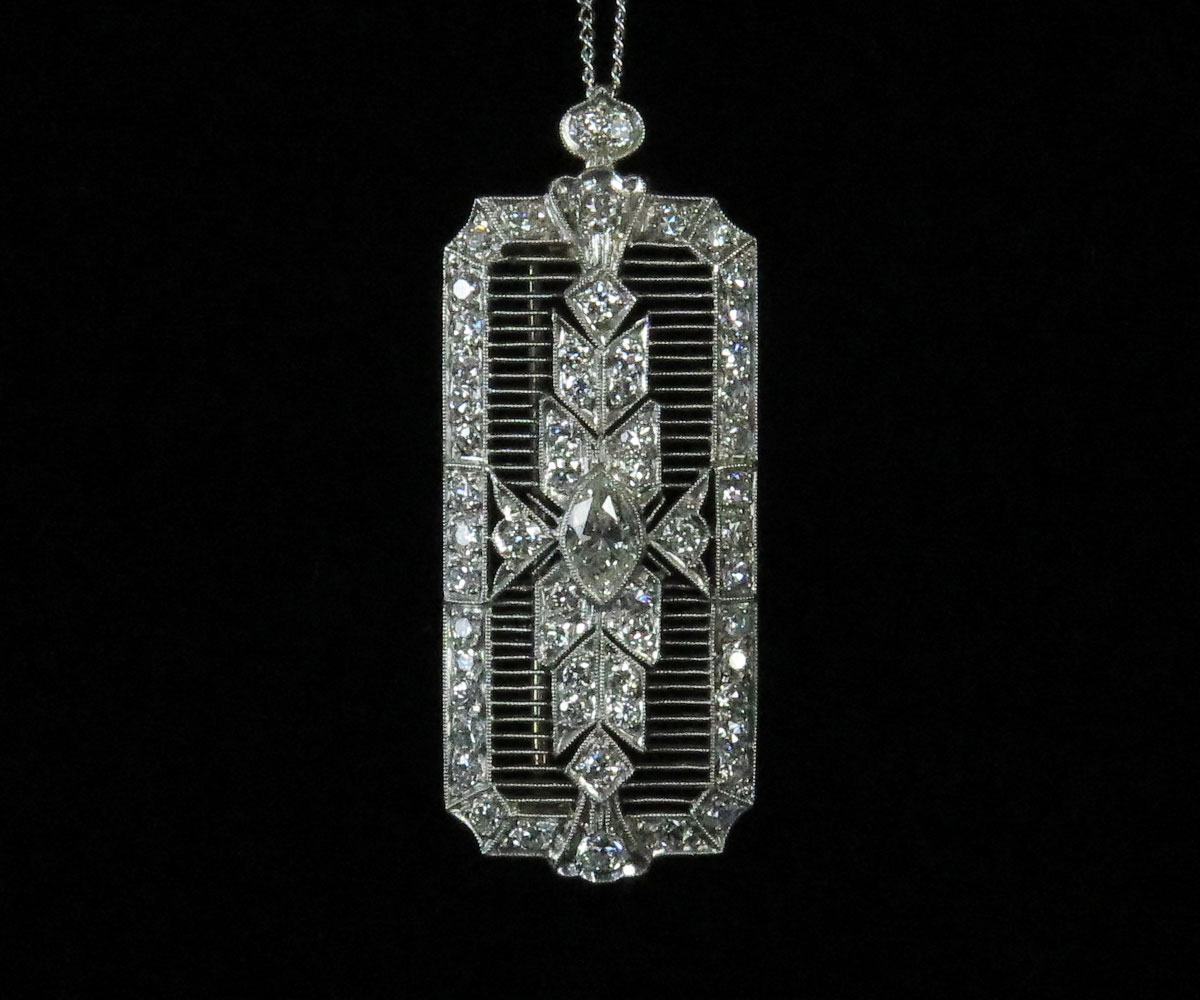
The Art Deco movement of the 1920s and 1930s was a time of extraordinary creativity, marked by bold geometric shapes, intricate craftsmanship, and a celebration of modernity. Art Deco pendantsfor women not only influenced architecture and fashion but also left an indelible mark on the world of jewelry. Art Deco pendants, in particular, embody the era's distinctive style, showcasing an exquisite blend of elegance and innovation.
List Of Popular Art Deco Pendants For Women
Art Deco pendants for women encompass a wide array of styles and designs, reflecting the diverse influences and artistic innovations of the period. Here are some types of Art Deco pendants in detail;
Geometric Pendants
Perhaps the most iconic of Art Deco designs, geometric pendants feature bold shapes, including squares, rectangles, and triangles. These pendants often use contrasting metals, such as platinumand yellow gold, and may incorporate black onyxor mother-of-pearl to create striking visual effects.
Filigree Pendants
Filigree work was a popular technique during the Art Deco era. Pendants with filigree designs feature intricate, openwork patterns in the metal, showcasing meticulous craftsmanship. These pieces are often delicate and elegant.
Tassel Pendants
Tassel pendants were fashionable during the 1920s, and they remain an iconic Art Deco style. They feature a pendant with a chaintassel that hangs gracefully, adding a touch of movement and sophistication to the jewelry.
Egyptian Revival Pendants
The Art Deco era was marked by a fascination with all things exotic, including Egyptian art and culture. Egyptian revival pendants often feature motifs like pyramids, hieroglyphics, and scarabs. These pieces evoke the mystique of ancient Egypt.
Fan-Shaped Pendants
Art Deco design frequently drew inspiration from Asian art, and fan-shaped pendants became popular. These pendants resemble the shape of traditional Asian fans and often feature intricate detailing and colorful gemstones.
Sunburst Pendants
The sunburst motif is a classic Art Deco design element. Pendants in this style feature radiating lines or rays, often with a central gemstone, symbolizing the sun. They exude a sense of energy and optimism.
Plaque Pendants
Plaque pendants are characterized by a flat, often rectangular, shape with elaborate designs. They might showcase a scene, a portrait, or intricate patterns, making them visually captivating and a testament to the era's artistic experimentation.
Enamel Pendants
Enamel work was a hallmark of Art Deco jewelry. Pendants featuring enamel may have vibrant, contrasting colors and intricate patterns, creating visually stunning and colorful pieces that capture the spirit of the period.
Machine Age Pendants
With the rise of industrialization, the Machine Age aesthetic influenced Art Deco design. Machine Age pendants often incorporate mechanical or industrial motifs, such as gears, wheels, and streamlined designs that celebrate the modern era.
Cocktail Pendants
The Art Deco era was synonymous with the emergence of cocktail culture. Cocktail pendants often feature vibrant gemstones like emeralds, rubies, and sapphires surrounded by diamonds, creating dazzling and opulent pieces fit for the era's glamorous soirées.
Intricate Cameo Pendants
Cameo pendants with intricate carvings and detailing were a favorite during the Art Deco period. These pendants often depicted portraits, mythological scenes, or motifs of the era, capturing the essence of the time in miniature art.
Art Deco pendants for women are a diverse and captivating category of jewelry. Whether you're drawn to the bold geometry, delicate filigree, or the era's fascination with exotic influences, there is an Art Deco pendant to suit every style and preference. These pendants not only offer a glimpse into the past but also continue to inspire and captivate contemporary fashion enthusiasts with their timeless elegance and distinctive design.
How To Identify Art Deco Pendants
Identifying Art Deco pendants can be an enjoyable process, but it requires a keen eye for the distinctive characteristics of the Art Deco style. Here are some key steps to help you identify Art Deco pendants;
- Geometric Shapes- Squares, triangles, circles, and other geometric shapes are frequently used in art deco jewelry. Both the jewelry's overall design and its components make use of these shapes.
- Symmetry- A crucial component of Art Deco design is symmetry. Jewelry creations frequently have balanced groupings of shapes, lines, and jewels and are symmetrical.
- Bold Colors- Art Deco jewelry frequently uses vibrant colors. Deep blue, rich crimson, and vibrant green gemstones, among others, are regularly utilized to produce stunning contrasts and add visual Appeal.
- Influence of Ancient and Exotic Cultures - Ancient Egyptian, Aztec, and Asian cultures are some of the many effects of Art Deco jewelry. The themes, patterns, and symbols employed in the designs show these influences.
- Emphasis on Machine Age Aesthetics- In the 1920s and 1930s, a time of industrialization and technical growth, the Art Deco style first appeared. The Machine Age was a significant influence on the design of Art Deco jewelry, which frequently included streamlined forms, geometric patterns, and themes that symbolized progress and speed. As seen in the main image, the sunburst and skyscraper motifs were particularly well-liked.
Overall, elegance, richness, and modernism are highlighted in Art Deco. It stands for a celebration of the industrial era and a longing for a more glitzy and cheerful future.
What Does Art Deco Jewelry Look Like?
Chevron patterns, geometric shapes, stepped patterns, symmetrical patterns, and fan shapes were common art deco design elements. Egyptian-inspired patterns saw a surge in popularity due to the 1922 discovery of Tutankhamun's tomb. As women's freedom led to shorter hairstyles, earringsgrew longer to match the new hairdos.
Emeralds and sapphires were famous because of their striking colors, while diamonds continued to be popular because of their spectacular shine. Art Deco jewelry made a statement. Rhinestones and paste could be used as a replacement for individuals on a tighter budget.
Onyxand rhinestone combinations dominated black-and-white color schemes, which were also a major fad. Long necklaceswere also standard, and long strings of pearls, frequently finished with knots or tassels, made the ideal finishing touch for a flapper girl's ensemble.
Modern Appeal Of Art Deco Jewelry
Despite being created more than a century ago, Art Deco jewelry is still favored and produced today. Engagement ringsmade in the Art Deco style are magnificent, classic pieces that go with everyone. And if you're searching for a pair of statement earrings, the iconic Art Deco design is almost always a hit.
The Daisy Fellowes Cartier necklace is one of the most expensive pieces of jewelry in existence, and many jewelry collectors now value Art Decoartifacts as some of their most prized belongings.
Characteristics Of Art Deco Jewelry
However, it is crucial to keep in mind that not all of the jewelry made in the 1920s and 1930s was in the Art Deco design and that not all Art Deco jewelry exhibits the same traits.
Although early Art Deco jewelry tends to be more feminine and graceful, later Art Deco jewelry is more austere and geometric; thus, we will interpret post-1925 influences as merely a continued development of an already existing style rather than as a whole new trend.
The bulk of jewelry designs tend to be quite geometric and symmetrical, reflecting the influence of cubist geometry on the movement as a whole, even while early Deco jewelry tended to favor the more structured floral motifs, and the movement accommodated a wide variety of topics. The use of color is significant in defining Art Deco jewelry.
Color additions to this palette were often striking. Black onyx and black enamel with diamondcrystal or both were popular color combinations. The fruit salad design is a well-known example of this tendency. It frequently combines diamonds with a variety of colored gemstones, most commonly ruby, sapphire, emerald, black onyx, and perhaps turquoiseor coral. Art Deco was obviously not a subtle fashion.
Materials Used In Art Deco Jewelry
Art Deco pendants are known for their diverse and often lavish materials, reflecting the luxury and creativity of the era. The following are some of the materials commonly used in creating Art Deco pendants;
Precious Metals
Platinum was a favored metal due to its durability and white luster, which complemented the era's fascination with geometric and monochromatic designs. Yellow gold, often in combination with platinum, was used for warmth and contrast, especially in two-tone designs.
Gemstones
Diamonds were a staple in Art Deco jewelry, prized for their brilliance and sparkle. They were often used in geometric patterns or as accents around colorful gemstones. These vibrant gemstones were popular for adding splashes of color to pendants. They were frequently used in a range of shapes and cuts.
Black onyx was often used for its stark contrast with white metals and diamonds, creating bold and striking designs. Jade was particularly popular in Art Deco designs, as it was associated with Asian aesthetics, and its rich green color added an exotic touch.
Enamel
Art Deco pendants often featured colored enamel work with vibrant and contrasting hues in geometric patterns, adding a sense of modernity and style. This translucent enamel allowed light to pass through, creating a stained glass effect and lending an ethereal quality to the pendants.
Gemstone Carvings
Some pendants featured intricately carved gemstones like jade, rock crystal, and coral. These carvings often depicted mythological or nature-inspired motifs.
Marble And Stone Inlays
Pendants sometimes feature inlaid marble or semi-precious stones like lapis lazuliand malachite, adding texture and depth to the design.
Glass And Rhinestones
Glass and rhinestones were used to imitate the look of gemstones in more affordable Art Deco pieces, allowing for a broader range of designs.
A Guide To Art Deco Jewelry
One of the most recognizable design movements of the 20th century, the Art Deco style influenced everything from architecture to fashion to art. The relevance of the Art Deco movement and the drastic shift in design it sparked is still acknowledged today, even after a century. We discuss some of the major factors that shaped this revolutionary style and the novel jewelry creations that resulted from it in this post;
Cultural Shifts And The Birth Of Art Deco
A confluence of significant political and cultural occurrences in the early 20th century had a significant impact on the world of art and design. World War I, international cultural interaction, and industrial progress influenced the advent of the Art Deco era.
Out With The Old
The Art Nouveau and Victorian overlapping styles were ending around the turn of the century. The aesthetic of Art Nouveau, which prioritized beauty overuse, ultimately proved to be unappealing and died out in the early 20th century. Early Victorian excess adornment was quickly viewed as old-fashioned and out-of-date, and careful design and clean lines became the standard.
Art Deco Jewelry Designers
Famous for its stunning Art Deco jewelry designs is Cartier. To create magnificent pieces, the brand used geometric designs, vivid hues, and a mix of gems like diamonds, emeralds, sapphires, and rubies.
Another well-known maker of Art Deco jewelry is Van Cleef & Arpels. They frequently used striking jewels, symmetrical patterns, and detailed work in their creations. Particularly fascinating are the catalog items on their website that feature some of their Art Deco jewelry.
In the 1930s, Trifari, a well-known jewelry brand, was influenced by Cartier. During this time, a lot of Trifari's jewelry items paid homage to Cartier's designs and fashions. The "tutti frutti" pieces by Trifari, which were obviously inspired by Cartier's jewelry collection, are one famous example.
The Neiger Brothers were well-known for their jewelry designs, which were influenced by many different cultures, especially those of Egypt and Asia. Their designs utilized features and motifs that drew inspiration from these civilizations' artistic traditions and meaning.
Eisenberg produced a line of jewelry known as "Eisenberg Originals" in the 1930s and 1940s. These objects were distinguished by the geometric and symmetrical patterns that were fashionable in the Art Deco period. Eisenberg used the Art Deco movement's emphasis on symmetry, strong shapes, and clear lines in their creations.
Art Deco Pendants For Women - FAQs
What Does Art Deco Symbolize?
Modernism transformed into fashion was reflected by Art Deco design. Both hand-made luxury goods and mass-produced goods were among its offerings, but the goal was to create a modern, anti-traditional elegance that denoted wealth and refinement.
What Is The Meaning Of Art Deco Jewelry?
Just before World War I, in the 1910s, France was the birthplace of the Art Deco design movement, which lasted until the 1930s. Bold lines, sharp angles, and geometric patterns embraced societal and technical advancement during this age, which stands for luxury, modern flair, and glamor.
What Are The Critical Design Elements Of Art Deco Pendants?
Art Deco pendants typically feature geometric shapes, symmetry, intricate filigree work, contrasting materials, and a focus on precision and detail. The style often incorporates bold patterns, color contrasts, and the use of diamonds and colored gemstones.
Can I Wear Art Deco Pendants In Contemporary Fashion?
Yes, Art Deco pendants are versatile and can be worn with a wide range of fashion styles, from vintage-inspired to modern. They add a touch of timeless elegance and can be used to create a unique and eye-catching look.
What Materials Were Commonly Used In Art Deco Pendants?
Art Deco pendants often used materials like platinum, gold, diamonds, colored gemstones (emeralds, sapphires, rubies), black onyx, enamel, mother-of-pearl, and other precious and semi-precious materials.
Conclusion
Art Deco pendants for women are an embodiment of a golden age of design and glamour. Their enduring allure lies in their timeless aesthetic, meticulous craftsmanship, and the ability to transport us back to the opulent era of the 1920s.
Whether you appreciate their geometric precision, dazzling gemstones, or the influence they've had on contemporary fashion, Art Deco pendants continue to captivate, inspire, and adorn women with a touch of the Roaring Twenties' spirit. So, whether you're drawn to their historical significance or their striking beauty, consider adding an Art Deco pendant to your jewelry collection and let your style channel the timeless elegance of the past.
